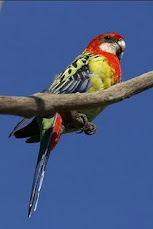Peacock
The Physical Basis of the Beauty in Peacock
Nobody looking at the patterns in peacock feathers can avoid being amazed at their beauty. One of the latest pieces of research by scientists has revealed that there is an astonishing design at the basis of these patterns.
Chinese scientists have discovered a delicate mechanism of tiny hairs in peacock feathers filtering and reflecting different wavelengths of light. According to a study performed by Fudan University physicist Jian Zi and colleagues, published in the journal Proceedings of the National Academy of Sciences, the feathers' bright colors are produced not by pigments, but by tiny, two-dimensional crystal-like structures. (1)
Zi and his colleagues used powerful electron microscopes to reveal the basis of the colors in the feathers. They examined the barbules of the male green peacock (Pavo rnuticus), in other words the even smaller micro hairs that come off of barbs emerging from the central stem of the feather. Under the microscope, they encountered the lattice design in the black-and-white picture to the right. This consisted of rods made of melanin, a protein, bound together with keratin, another protein. The researchers observed that these two-dimensional structures, each with a width hundreds of times thinner than a human hair, were arranged one behind the other on the micro hairs. Using additional optical examinations and calculations, the scientists examined the spaces between the crystals and their effects. As a result, it was revealed that the dimensions and shapes of these spaces in the lattice led to light being reflected at slightly different angles and thus to a variation in color.
"The male peacock tail contains spectacular beauty because of the brilliant, iridescent, diversified, colorful eye patterns," said Zi, who continued, "when I watched the eye pattern against the sunshine, I was amazed by the stunning beauty of the feathers." (2) Zi stated that until their study, the exact physical mechanism producing the colors in peacock feathers had not been known, and that although the mechanisms they had revealed were simple, they were absolutely ingenious.
Obviously, there is a very specially regulated design in peacock feather patterns. The tiny lattices and spaces between them are of the greatest importance in this design. The adjustment between the spaces is particularly striking. Were these not so arranged as to reflect light at slightly different angles to one another, then this variation in color would not take place.
The greater part of the color in the peacock feather is based upon structural coloration. There is no pigment in those parts of the feather that exhibit structural coloration, and colors reminiscent of those on the surface of a soap bubble are able to emerge. The color of human hair comes from pigment, and no matter how much care a person may take of his or her hair, it is never as shiny and beautiful as a peacock feather.
It has also been stated that this intelligent design in the peacock can be a source of inspiration in industrial design. Andrew Parker, a zoologist and coloration expert at the University of Oxford, who interpreted Zi's findings says that discovering so-called photonic crystals in peacock feathers could allow scientists to adapt the structures for industrial and commercial applications. These crystals could be used to channel light in telecommunications equipment, or to create new tiny computer chips. (3)
It is clear that the peacock has marvelous patterns and a special design, and that thanks to the imitation of this mechanism, maybe in the near future, we shall see objects and accessories covered in the brightest of coatings. Yet how did such a gorgeous, intelligent and inspirational design first emerge? Could the peacock know that the colors in its feathers depended on crystals and the spaces between them? Could the feather have itself brought the feathers on its body into being and later have decided to add a coloring mechanism to them? Could it then have arranged that mechanism in such a way as to produce those stunning designs? Of course, not.
For example, if we were to encounter marvelous patterns made out of colored stones as we walked beside the edge of a river, and if we also saw that there were eye-like designs arranged like a fan, then we would think that these had been laid out in a conscious manner, and not that they had appeared by chance. It would be evident that these patterns, reflecting an artistic perspective and addressing human aesthetic tastes, had been made by an artist. The same thing applies to peacock feathers. In the same way that pictures and designs reveal the existence of the artists who produced them, the patterns in the peacock feather reveal the existence of the Creator Who made them. There can be no doubt but that it is God Who brought together and arranged the crystal-like structures in the peacock feather and produced such marvelous patterns from them. God reveals His flawless creation in a verse from the Qur'an:
DISCLAIMER
We are extending our courtesy to those peoples,websites, groups and communities. If any suggestions or complaints, please Email me..










